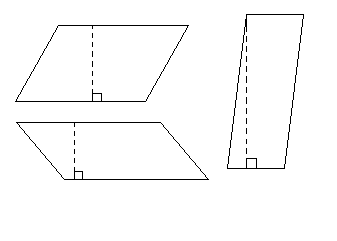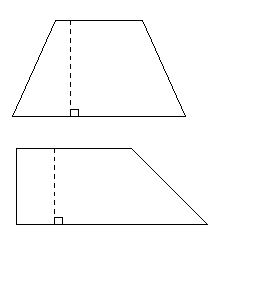Please wait while we process your payment
If you don't see it, please check your spam folder. Sometimes it can end up there.
If you don't see it, please check your spam folder. Sometimes it can end up there.
Please wait while we process your payment
Get instant, ad-free access to our grade-boosting study tools with a 7-day free trial!
Learn more



This site is protected by reCAPTCHA and the Google Privacy Policy and Terms of Service apply.
Create Account
Select Plan
Payment Info
Start 7-Day Free Trial!

Annual
2-49 accounts
$22.49/year + tax
50-99 accounts
$20.99/year + tax
Select Quantity
Price per seat
$29.99 $--.--
Subtotal
$-.--
Want 100 or more? Request a customized plan
You could save over 50%
by choosing an Annual Plan!

SAVE OVER 50%
compared to the monthly price!
| Focused-studying | ||
| PLUS Study Tools | ||
| AP® Test Prep PLUS | ||
| My PLUS Activity | ||
$22.49/month + tax
Save 25%
on 2-49 accounts
$20.99/month + tax
Save 30%
on 50-99 accounts
| Focused-studying | ||
| PLUS Study Tools | ||
| AP® Test Prep PLUS | ||
| My PLUS Activity | ||
No Fear provides access to Shakespeare for students who normally couldn’t (or wouldn’t) read his plays. It’s also a very useful tool when trying to explain Shakespeare’s wordplay!
Erika M.
I tutor high school students in a variety of subjects. Having access to the literature translations helps me to stay informed about the various assignments. Your summaries and translations are invaluable.
Kathy B.
Teaching Shakespeare to today's generation can be challenging. No Fear helps a ton with understanding the crux of the text.
Kay H.
No Fear provides access to Shakespeare for students who normally couldn’t (or wouldn’t) read his plays. It’s also a very useful tool when trying to explain Shakespeare’s wordplay!
Erika M.
I tutor high school students in a variety of subjects. Having access to the literature translations helps me to stay informed about the various assignments. Your summaries and translations are invaluable.
Kathy B.
Teaching Shakespeare to today's generation can be challenging. No Fear helps a ton with understanding the crux of the text.
Kay H.
Create Account
Select Plan
Payment Info
Start 7-Day Free Trial!
You will only be charged after the completion of the 7-day free trial.
If you cancel your account before the free trial is over, you will not be charged.
You will only be charged after the completion of the 7-day free trial. If you cancel your account before the free trial is over, you will not be charged.
Order Summary
Annual
7-day Free Trial
SparkNotes PLUS
$29.99 / year
Annual
Quantity
51
PLUS Group Discount
$29.99 $29.99 / seat
Tax
$0.00
SPARK25
-$1.25
25% Off
Total billed on Nov 7, 2024 after 7-day free trail
$29.99
Total billed
$0.00
Due Today
$0.00
Promo code
This is not a valid promo code
Card Details
By placing your order you agree to our terms of service and privacy policy.
By saving your payment information you allow SparkNotes to charge you for future payments in accordance with their terms.
Powered by stripe
Legal
Google pay.......



Please wait while we process your payment

Sorry, you must enter a valid email address
By entering an email, you agree to our privacy policy.
Please wait while we process your payment

Sorry, you must enter a valid email address
By entering an email, you agree to our privacy policy.
Please wait while we process your payment

Your PLUS subscription has expired
Please wait while we process your payment
Please wait while we process your payment

Area of Quadrilaterals
As we learned in the Polygons SparkNote, quadrilaterals can be classified into three basic groups:
To calculate the area of a parallelogram, we must introduce a new term: the
altitude of a parallelogram. The altitude of a parallelogram is the
line
segment
perpendicular to one pair of sides with one
endpoint on one of these sides of the parallelogram, and the other endpoint on
the line containing the opposite
side of the parallelogram. Below appear the
altitudes of various parallelograms.

The area of a parallelogram is the product of the length of its altitude and the length of the side that contains the endpoint of the altitude. This side is called the base of the parallelogram. Any side can become a base of a given parallelogram: all you need to do is draw an altitude from it to the line that contains the opposite side. A common way to describe the area of a parallelogram is the base times the height (base x height), where the height is the altitude.
The formulas for the area of various special parallelograms are even simpler. For a rectangle, the area is the product of the length of any two adjacent sides. In any such case, one side is the base, and the other side is the altitude. The area of a square is the length of any side (all four are congruent) squared. The area of a rhombus is equal to one-half the product of its diagonals. Note that these special formulae are simply modified versions of the original base-times-height formula given for the area of a parallelogram.
The formula for the area of a trapezoid also requires new vocabulary. The altitude of a trapezoid is the segment perpendicular to the bases with one endpoint on a base of the trapezoid, and the other endpoint on the line that contains the other base. Here are various trapezoids pictured with their altitudes:

The area of a trapezoid equals half the product of the sum of the length of its bases and the length of its altitude((1/2(b1 + b2)) x A). Half the sum of its bases is the average length of its bases, which is equal to the length of its median. So another way to find the area of a trapezoid is to calculate the product of the lengths of its altitude and median.
Please wait while we process your payment





